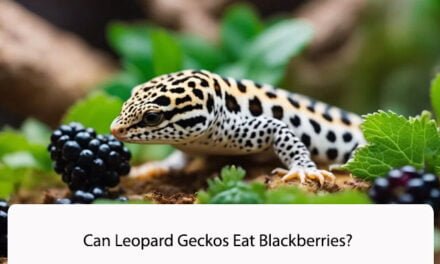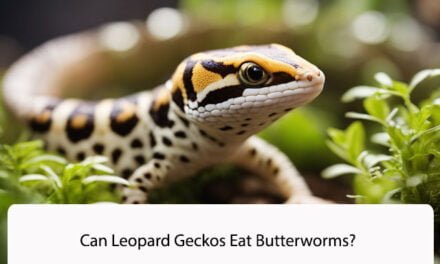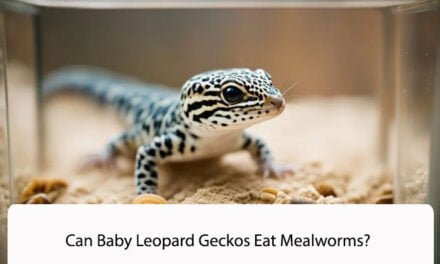Leopard geckos are fascinating creatures that make great pets. They are relatively easy to care for, and their diet is not very complicated. However, many new owners often wonder whether it is safe to feed their geckos dried food. In this article, we will answer the question “can leopard geckos eat dried food?” and provide you with all the information you need to know about feeding your gecko a healthy, balanced diet.
Leopard geckos are insectivores, which means that they eat insects. In the wild, they feed on a variety of insects, including crickets, mealworms, and waxworms. However, in captivity, it can be difficult to provide your gecko with a varied diet. This is where dried food comes in. Dried food is a convenient and easy way to supplement your gecko’s diet, but is it safe for them to eat? In the following paragraphs, we will explore the pros and cons of feeding your gecko dried food and provide you with some tips on how to incorporate it into their diet safely.
Leopard Gecko Dietary Basics
When it comes to feeding leopard geckos, it’s important to keep in mind that they are insectivores. This means that their diet should consist mainly of insects. However, it is possible to supplement their diet with dried food.
Leopard geckos can eat dried food, but it should not be their primary source of nutrition. Dried food can be used as a supplement to their regular diet of live insects. It is important to choose a high-quality dried food that is specifically formulated for leopard geckos.
Some examples of dried food that can be fed to leopard geckos include mealworms, crickets, and waxworms. These dried insects can be found at most pet stores and are a convenient option for owners who may not have access to live insects.
It is important to note that a diet consisting solely of dried food can lead to health problems in leopard geckos. Dried food lacks the moisture content that live insects provide, which can lead to dehydration. Additionally, a diet lacking in variety can lead to nutritional deficiencies.
In conclusion, dried food can be a part of a leopard gecko’s diet, but it should not be their primary source of nutrition. A diet consisting mainly of live insects is the best way to ensure that your leopard gecko stays healthy and happy.
Understanding Dried Foods for Leopard Geckos
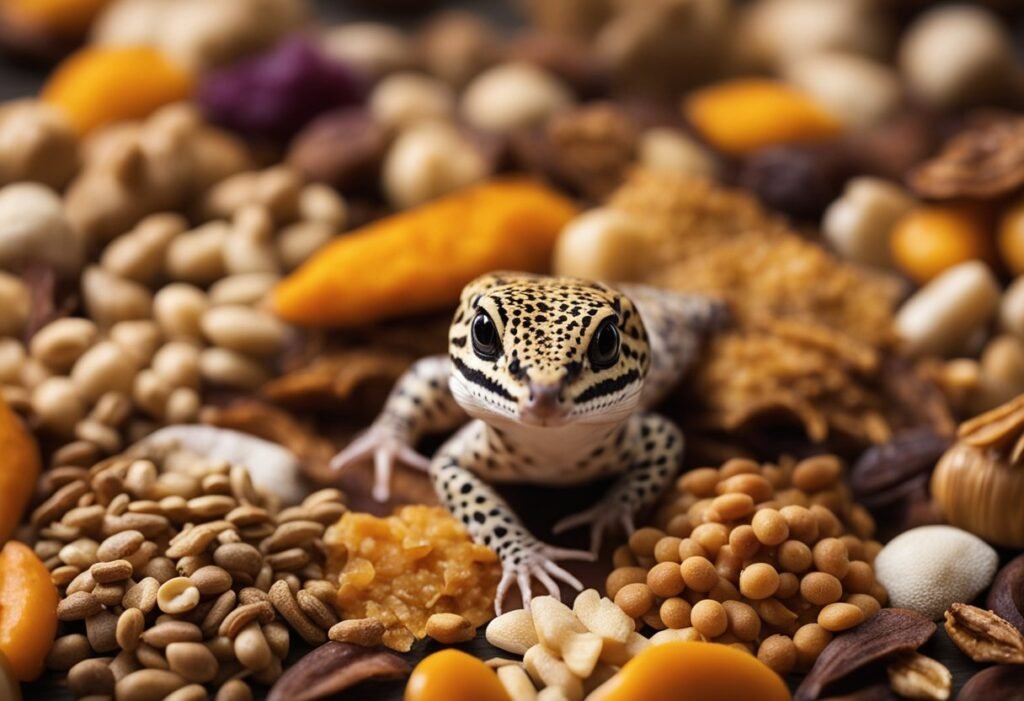
When it comes to feeding our leopard geckos, it’s important to provide them with a balanced diet that meets their nutritional needs. One option for feeding is dried foods, such as mealworms, crickets, and other insects.
Dried foods can be a convenient and cost-effective option for feeding leopard geckos. However, it’s important to understand that not all dried foods are created equal. Some may lack important nutrients or contain harmful additives.
When choosing dried foods for our leopard geckos, we should look for options that are high in protein and low in fat. It’s also important to choose foods that are free from preservatives, artificial colors, and other additives.
In addition to choosing high-quality dried foods, we should also consider supplementing our leopard geckos’ diets with calcium and vitamin D3. These nutrients are essential for maintaining strong bones and overall health.
Overall, dried foods can be a great option for feeding leopard geckos, but it’s important to choose high-quality options and supplement with essential nutrients.
Benefits of Dried Food in a Leopard Gecko’s Diet
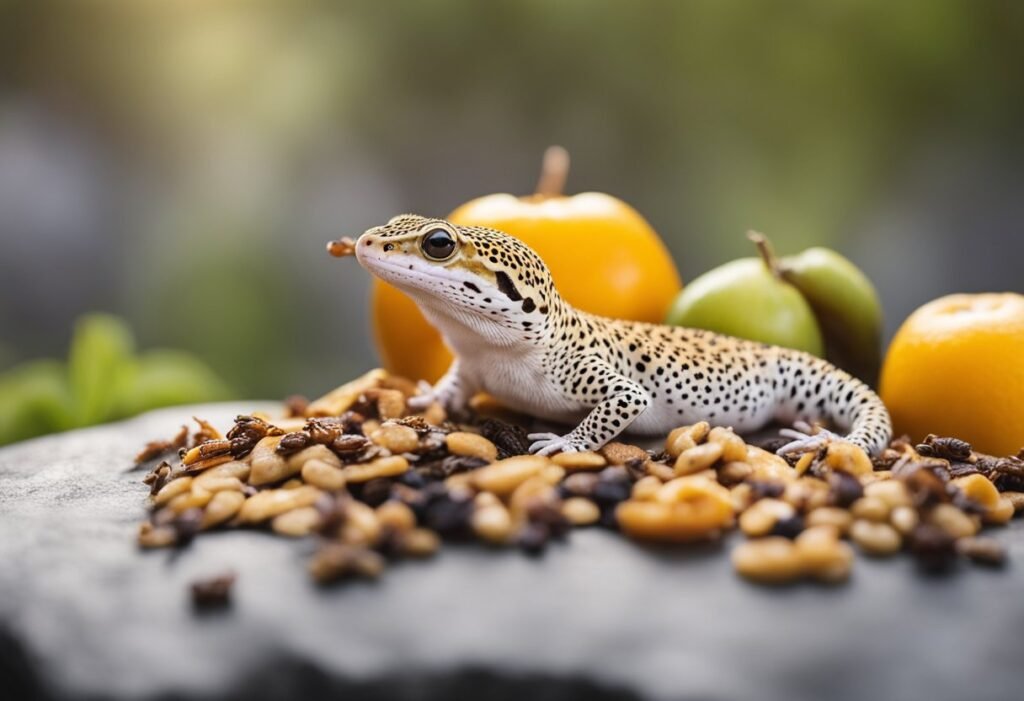
As leopard geckos are insectivores, their diet mainly consists of live insects. However, dried food can also be a beneficial addition to their diet. Here are some benefits of including dried food in a leopard gecko’s diet:
- Convenience: Dried food is easy to store and can be kept for a longer time than live insects. This makes it a convenient option for owners who may not have access to live insects regularly or prefer a low-maintenance feeding routine.
- Nutritional value: Dried food is often fortified with vitamins and minerals, making it a good source of nutrition for leopard geckos. It can also provide a balanced diet when combined with live insects.
- Variety: Including dried food in a leopard gecko’s diet can provide variety and prevent them from becoming bored with their food. This can also encourage them to eat a wider range of nutrients.
It is important to note that dried food should not be the sole source of nutrition for leopard geckos. Live insects should still make up the majority of their diet, as they provide essential nutrients and promote natural hunting behavior. However, adding dried food to their diet can be a convenient and beneficial supplement.
Risks and Considerations When Feeding Dried Food
When it comes to feeding leopard geckos, dried food can be a convenient option for many owners. However, there are some risks and considerations to keep in mind when offering this type of food to your gecko.
Firstly, it’s important to note that not all dried foods are created equal. Some brands or types may contain unhealthy additives or preservatives that can be harmful to your gecko’s health. Always check the ingredient list and choose a high-quality, reputable brand.
Another consideration is the nutritional value of dried food. While some options may be fortified with vitamins and minerals, they may still lack the variety and balance of nutrients that a gecko needs for optimal health. It’s important to offer a varied diet that includes live insects and other fresh foods in addition to dried food.
Feeding dried food exclusively can also lead to dehydration in leopard geckos. Unlike live insects or fresh foods, dried food does not contain much moisture. It’s important to ensure that your gecko has access to fresh water at all times and monitor their hydration levels closely.
Overall, dried food can be a convenient option for feeding leopard geckos, but it should not be the sole source of their diet. Always choose a high-quality brand, offer a varied diet, and monitor your gecko’s health and hydration levels closely.
Proper Ways to Feed Dried Food to Leopard Geckos
When feeding dried food to leopard geckos, it’s important to follow some guidelines to ensure they receive the proper nutrition they need. Here are some tips to help you feed dried food to your leopard gecko:
- Choose high-quality dried food: It’s important to choose a high-quality dried food that is specifically formulated for leopard geckos. Look for one that is high in protein and low in fat. Avoid any dried food that contains fillers or artificial preservatives.
- Offer a variety of dried food: Feeding your leopard gecko a variety of dried food can help ensure they receive a balanced diet. Mix up the types of dried food you offer, such as crickets, mealworms, and waxworms.
- Offer dried food in moderation: While dried food can be a convenient option for feeding your leopard gecko, it should not be their sole source of nutrition. Offer dried food in moderation and always provide fresh water and live food as well.
- Use a feeding dish: To prevent your leopard gecko from accidentally ingesting substrate, use a feeding dish to offer dried food. This will also make it easier to monitor how much they are eating.
By following these guidelines, you can ensure your leopard gecko receives the proper nutrition they need from dried food. Remember to always monitor their eating habits and adjust their diet as needed.
Best Practices for Hydration and Dried Food
When it comes to feeding leopard geckos, it’s important to ensure they are properly hydrated. While dried food can be a convenient option, it’s crucial to keep in mind that it is not a substitute for water. Here are some best practices for hydration and dried food for leopard geckos.
- Always provide fresh water in a shallow dish. Change the water daily to prevent bacteria buildup and ensure your gecko has access to clean drinking water.
- Supplement dried food with live insects, such as crickets or mealworms, to provide additional hydration and nutrients.
- Avoid using dried food as the sole source of nutrition. A varied diet is essential for leopard geckos to thrive.
- Monitor your gecko’s behavior and hydration levels. Signs of dehydration include sunken eyes and wrinkled skin. If you suspect your gecko is dehydrated, offer water and consult with a veterinarian.
- Consider adding a humid hide to your gecko’s enclosure. This can help maintain proper hydration levels and prevent dehydration.
Overall, while dried food can be a convenient option for feeding leopard geckos, it’s important to prioritize hydration and a varied diet for their overall health and well-being.
Alternatives to Dried Food for Leopard Geckos
As leopard geckos are insectivores, they require a diet rich in protein and other essential nutrients. While dried food can be a convenient option, it may not provide all the necessary nutrients for your pet’s health. Here are some alternatives to dried food that you can consider for your leopard gecko:
Live Insects
Live insects are a great source of protein and other nutrients that leopard geckos need. Some of the best options include crickets, mealworms, and waxworms. You can also offer other insects like roaches, grasshoppers, and silkworms to provide variety in their diet. It’s important to gut-load the insects with nutritious foods before feeding them to your leopard gecko.
Fresh Vegetables
While leopard geckos are primarily insectivores, they can also benefit from some fresh vegetables in their diet. Some good options include leafy greens like kale and collard greens, as well as squash, sweet potato, and carrots. Make sure to chop the vegetables into small pieces and offer them sparingly as treats.
Commercial Diets
There are some commercial diets available that are specifically formulated for leopard geckos. These diets can be a convenient option, but it’s important to choose a high-quality brand that contains all the necessary nutrients. Make sure to read the label carefully and avoid any diets that contain fillers or artificial preservatives.
By offering a variety of live insects, fresh vegetables, and high-quality commercial diets, you can ensure that your leopard gecko receives a balanced and nutritious diet. Remember to always provide fresh water and monitor your pet’s health and appetite regularly.
Monitoring Your Leopard Gecko’s Health with Diet Changes
As responsible pet owners, we want to ensure that our leopard geckos are healthy and happy. One way to monitor their health is by observing their diet and making necessary changes.
Leopard geckos are primarily insectivores, and they require a diet that is high in protein. While dried food may be a convenient option, it should not be the sole source of their diet. It is important to provide a variety of live insects such as crickets, mealworms, and waxworms.
If you decide to incorporate dried food into your leopard gecko’s diet, it is important to choose a high-quality brand that is specifically formulated for leopard geckos. Always check the ingredients list to ensure that it contains essential nutrients such as protein, fat, and calcium.
We recommend monitoring your leopard gecko’s weight and overall health regularly. If you notice any changes in their appetite, weight, or behavior, it may be a sign that their diet needs to be adjusted. Consult with a veterinarian or a reptile specialist for guidance on making appropriate changes to their diet.
In summary, while dried food can be a part of a leopard gecko’s diet, it should not be the only source of nutrition. Providing a varied diet of live insects and monitoring their health regularly can help ensure that your leopard gecko stays healthy and happy.
Frequently Asked Questions
What types of dried insects are safe for leopard geckos to consume?
Leopard geckos can safely consume a variety of dried insects, including crickets, mealworms, and waxworms. However, it is important to ensure that the insects are properly gut-loaded and dusted with calcium and vitamin supplements before feeding them to your leopard gecko.
Are dried crickets a suitable food source for leopard geckos?
Dried crickets can be a suitable food source for leopard geckos, as long as they are properly gut-loaded and dusted with calcium and vitamin supplements. However, it is important to note that some leopard geckos may prefer live prey, and it is always a good idea to offer a variety of food options to ensure a balanced diet.
Can leopard geckos safely eat dried mealworms?
Leopard geckos can safely eat dried mealworms, but it is important to note that mealworms have a hard exoskeleton that can be difficult for leopard geckos to digest. It is recommended to only offer mealworms as an occasional treat and to ensure that they are properly gut-loaded and dusted with calcium and vitamin supplements.
What are the potential risks of feeding leopard geckos dried food?
Feeding leopard geckos a diet consisting solely of dried food can lead to health problems, such as vitamin and mineral deficiencies. It is important to offer a variety of fresh and live food options to ensure a balanced diet. Additionally, some dried food items may contain preservatives or other additives that can be harmful to leopard geckos.
Are there any commercial dried food pellets formulated specifically for leopard geckos?
Yes, there are commercial dried food pellets formulated specifically for leopard geckos. However, it is important to thoroughly research the brand and ingredients before offering them to your leopard gecko. It is also recommended to offer a variety of fresh and live food options in addition to dried food pellets.
What food items should be avoided to prevent toxicity in leopard geckos?
Leopard geckos should not be fed toxic or potentially harmful food items, such as avocado, citrus fruits, rhubarb, and chocolate. It is also important to avoid feeding leopard geckos insects that have been exposed to pesticides or other harmful chemicals.


